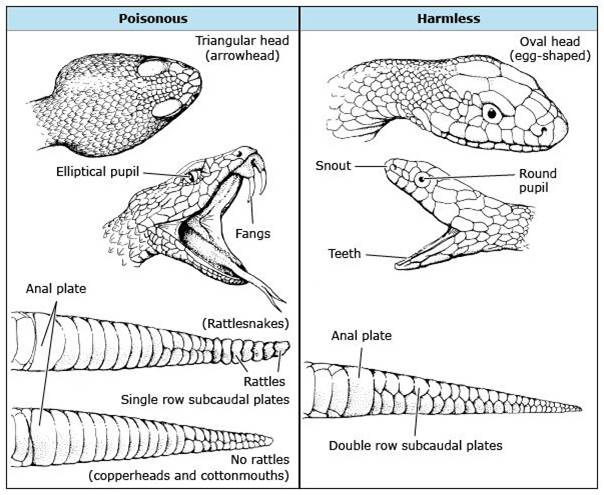Snake Bite
WHAT TO DO WHEN A SNAKE BITES
- Identify species of snake. (Necessary for anti-venom treatment)
- Stay Calm. Keep your heart rate down. Do not panic.
- Do not elevate the bitten area, Keep it below the heart.
- If you’re travelling with a group, send a person to the nearest place for help.
- Remove any jewellery or clothing that could become constricting when the bitten area swells.
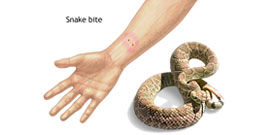
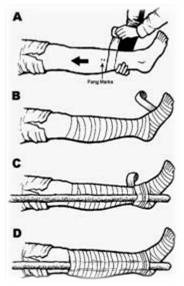

- Clean the bite site with soap and water or antiseptic and wipe before administering any other snake bite first aid.
- Wrap bite area tightly with ace bandage. Start below the bite and work your way up, do NOT wrap too tight, restricting circulation.
- Maintain gap of two fingers while wrapping the bite area.
- Immobilize or splint, if the bite is on an extremity, to prevent movement. This helps keep the venom from spreading more quickly.
- Remember, just because you are bitten doesn’t mean you are going to die. Venomous snake bites can be fatal, but often they are not. Avoid previously used snake bite kits, such as those containing razor blades and suction bulbs.
- One MUST remain calm until help arrives
PREVENTIONS
- Avoid areas where snakes may be hiding, such as under rocks and logs.
- Although most snakes are not poisonous, refrain from picking up or playing with them.
- If you walk often, consider buying a kit to treat snakebite.
- Probe by with a cane where it will happen before entering an area where they cannot see your feet; Snakes will try to avoid it if given enough warning.
- When working in an area known to have snakes, wear long pants and boots if possible.
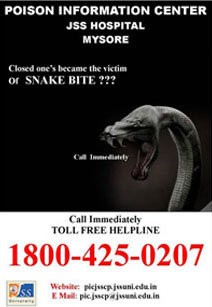
DO NOT
- DO NOT apply a tourniquet.
- DO NOT apply cold compresses to the site of the bite.
- DO NOT cut the bite area with a knife or a razor blade.
- DO NOT try to suck the venom by mouth.
- DO NOT give stimulants or pain medications to the person, unless the doctor tells you.
- DO NOT give the person anything by mouth.
- DO NOT raise the site of the bite above the level of the heart of the person.
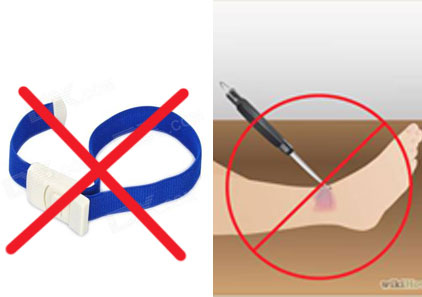
How To Differentiate Venomous And Non-Venomous Snakes
